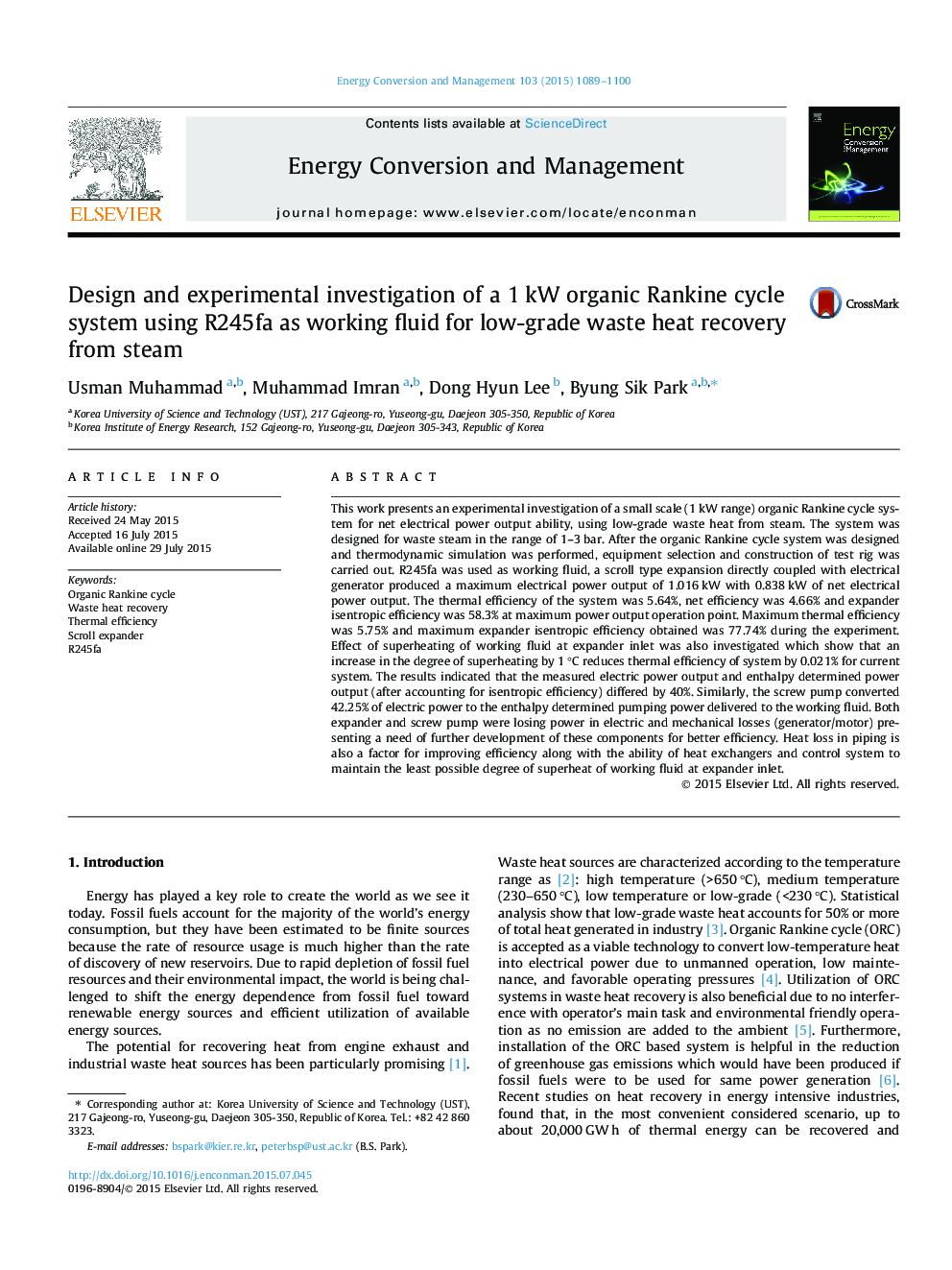| کد مقاله | کد نشریه | سال انتشار | مقاله انگلیسی | نسخه تمام متن |
|---|---|---|---|---|
| 771694 | 1462859 | 2015 | 12 صفحه PDF | دانلود رایگان |

• A 1 kW organic Rankine cycle test rig for waste heat recovery was investigated for net electric power output.
• Low grade steam (1–3 bar) was used directly in evaporator as heat source.
• Effect of superheating of working fluid on system performance was studied.
• The maximum electric power output and thermal efficiency is 1016 W and 5.75% respectively.
This work presents an experimental investigation of a small scale (1 kW range) organic Rankine cycle system for net electrical power output ability, using low-grade waste heat from steam. The system was designed for waste steam in the range of 1–3 bar. After the organic Rankine cycle system was designed and thermodynamic simulation was performed, equipment selection and construction of test rig was carried out. R245fa was used as working fluid, a scroll type expansion directly coupled with electrical generator produced a maximum electrical power output of 1.016 kW with 0.838 kW of net electrical power output. The thermal efficiency of the system was 5.64%, net efficiency was 4.66% and expander isentropic efficiency was 58.3% at maximum power output operation point. Maximum thermal efficiency was 5.75% and maximum expander isentropic efficiency obtained was 77.74% during the experiment. Effect of superheating of working fluid at expander inlet was also investigated which show that an increase in the degree of superheating by 1 °C reduces thermal efficiency of system by 0.021% for current system. The results indicated that the measured electric power output and enthalpy determined power output (after accounting for isentropic efficiency) differed by 40%. Similarly, the screw pump converted 42.25% of electric power to the enthalpy determined pumping power delivered to the working fluid. Both expander and screw pump were losing power in electric and mechanical losses (generator/motor) presenting a need of further development of these components for better efficiency. Heat loss in piping is also a factor for improving efficiency along with the ability of heat exchangers and control system to maintain the least possible degree of superheat of working fluid at expander inlet.
Journal: Energy Conversion and Management - Volume 103, October 2015, Pages 1089–1100